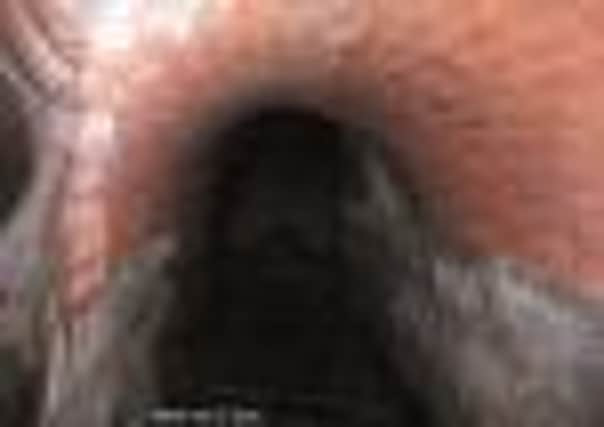‘Tunnel of love’ sewer discovered under streets of Blackburn


This Victorian-era “tunnel of love” has been uncovered deep beneath the streets of Blackburn town centre.
The tunnel - a brick-lined sewer from Lancashire’s industrial heyday - bears a resemblance to the romantic funfair ride, right down to the wooden rowing boat that brave souls must use to explore its twists and turns.
Advertisement
Hide AdAdvertisement
Hide AdThe tunnel has been sealed below ground for decades, but now engineers from United Utilities have begun inspecting it, as part of a major makeover for the town’s sewers.
The structure, 10m below Dickens Street has been dubbed the “tunnel of love” by successive generations of engineers, due to its unusual shape and mode of access.
Like their Victorian ancestors, engineers are using rowing boats to explore the tunnel, as motorised vessels risk sparking an explosion in the methane-filled interior.
Carly Atherton, United Utilities project manager said: “It’s an amazing structure. When you are sat in one of our wooden boats, merrily floating downstream, you could be forgiven for thinking you are on the tunnel of love ride at Blackpool pleasure beach. The only giveaway is the rather pungent smell.
Advertisement
Hide AdAdvertisement
Hide Ad“The tunnel was built in the 19th Century to collect surface water from Blackburn’s textile mills, and it still keeps parts of the town center drained to this day.
“We’re inspecting the tunnel as part of a wider sewer programme for the town, to tackle river pollution. It’s certainly one of the more unusual tunnels we have uncovered during the scheme.”
Engineers believe the tunnel needs to be protected from cross-contamination by an old Victorian foul-water sewer which runs directly above it. They plan to replace the foul-water sewer, to ensure flows from the tunnel of love run clean once more.
The work is part of a £35m. overhaul of Blackburn’s sewer network. Engineers are working across the town to increase the size of the sewers, to prevent sewer spills from polluting the River Darwen, River Blakewater and the Leeds-Liverpool canal.